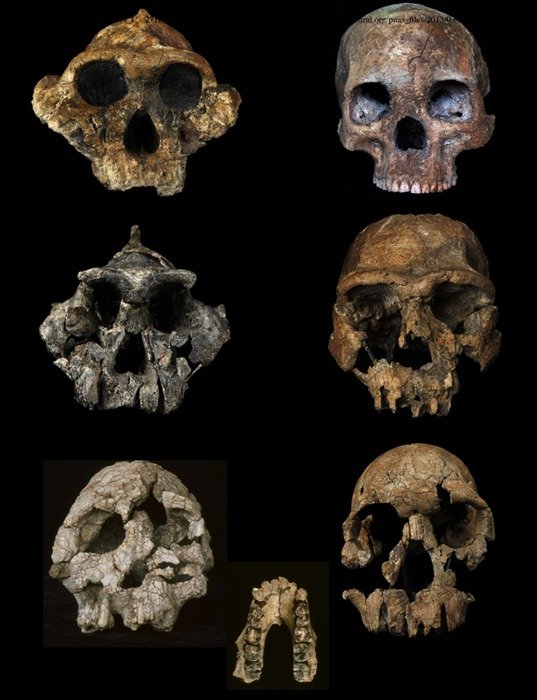The studies included analysis of tooth enamel from fossils of several early African humans, their ancestors and extinct relatives, some of which are shown here. Top left: Paranthropus bosei, 1.7 million years ago. Top right: Homo sapiens, 10,000 years ago. Center left: Paranthropus aethiopicus, 2.3 million years ago. Center right: Homo ergaster, 1.6 million years ago. Bottom left: Kenyanthropus platyops, 3.3 million years ago. Bottom center: lower jaw from Australopithecus anamensis, 4 million years ago. Bottom right: Homo rudolfensis, 1.9 million years ago. Credit: National Museum of Kenya
SALT LAKE CITY, June 4 (UPI) -- U.S. researchers say human ancestors expanded their menu 3.5 million years ago from an ape-like diet of leaves and fruits to an increasingly grassy diet.
Adding tropical grasses and sedges to an ape-like diet set the stage for our modern diet of grains, grasses, and meat and dairy from grazing animals, they said.
Researchers studying fossilized tooth enamel from scores of human ancestors and baboons in Africa from 4 million to 10,000 years ago found a surprising increase in the consumption of grasses and sedges -- plants that resemble grasses and rushes but have stems and triangular cross sections.
"For a long time, primates stuck by the old restaurants -- leaves and fruits -- and by 3.5 million years ago, they started exploring new diet possibilities -- tropical grasses and sedges -- that grazing animals discovered a long time before, about 10 million years ago" when African savanna began expanding, University of Utah geochemist Thure Cerling said.
"Tropical grasses provided a new set of restaurants. We see an increasing reliance on this new resource by human ancestors that most primates still don't use today," he said in a university release Tuesday.
However, the findings leave a lot of question unanswered, Cerling acknowledged.
"We know much better what they were eating, but mystery does remain," he said. "We don't know if they were pure herbivores or carnivores, if they were eating fish [which leave a tooth signal that looks like grass-eating], if they were eating insects or if they were eating mixes of all of these."
Answers to the question of what our early ancestors were eating are important, he said.
"If diet has anything to do with the evolution of larger brain size and intelligence, then we are considering a diet that is very different than we were thinking about 15 years ago," when it was believed human ancestors ate mostly leaves and fruits, Cerling said.















